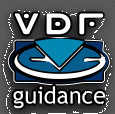Shared knowledge leads to accumulated knowledge |
| ||||||||||||||||||||||||||||||||||||||||||||||||||
COM Manifest Studioby Nils G. Svedmyr
The program is intended for using COM components - like CodeJock - without the hassle of using Windows registry. COM components are normally vulnerable to uninstallation - or updates to another version - made by other applications. It is more hassle free to include such COM info into manifest files - or even into the executable itself!
The advantage is that you won't need to register your COM components on each machine the program is to run on. And if another program uninstalls the same COM components your application uses, your application will run just fine without generating lots of "Cannot instantiate COM object..." upon startup - thus rendering less support calls. Technical explanationAn isolated application is a process that uses side-by-side private COM (DLL/OCX) components that resides in the application folder and so is not available to any other application. To do this the isolated application must use an application manifest file that contains dependency information about each COM component used by the application. In an isolated application with private COM components, the components will not be replaced when another application installs or uninstalls the same COM components on the machine. This also eliminates versioning conflicts and means that you will not need to register the components with the system by e.g. using the regsvr32.exe program. Two things are needed for this technique to work. a) The dependency information about each COM component needs to exist in the application's manifest file - or in the executable itself. b) The COM component files must exist in the same folder as the application. The COM Manifest Studio makes it very easy to achieve the above. SupportPlease SUPPORT this project by donating the amount what you think it is worth to have. By donating you not only support the software, but -if you want- you also get to be named as an official sponsor for the project. The COM Manifest Studio is a convenient tool for easing your application deployment - and once deployed - makes your application much more robust. * Everything * you donate goes straight to supporting the software. I would like to thank you in advance for your support. Video ClipIf the embedded video clip does not show... more contents is below and the video can be seen at link Current Sponsors
DownloadNewer versions are available directly from Nils his website https://www.rdctools.com/downloads/ Update!! The "COM Manifest Studio" recently made for DF 20.1 (but the source can also be used with earlier DF versions) and the workspace can be downloaded as a zip-file via this link: Everything below this line is old.... Link to VDF-Guidance SVN revision report that shows all changes made to the project: http://projects.vdf-guidance.com/projects/manifestsidebyside/repository/revisions NOTE: The best is to use Subversion link to download. That way you make sure you get the latest version. The zip files and installer program will always be of older date. Update! 21st of November. Download link to a digitally signed Installshield setup program. Includes the full source code as well as the compiled program. November 21, 2013, COMManifestBuilderProSetup.exe ~20, 379 kB New in the Studio version is: a completely new UI, a wizard to create new projects and an "over the internet update feature". Featured are: Digitally sign your application, compress program files, embed manifest in program file, create manifest fragments, register/unregister COM components and a new fancy about box that promotes Visual DataFlex. Please see the list of changes at the bottom of this page for a more detailed list on what has changed. older DownloadsUpdate! 17th of April. Download link to a digitally signed Installshield setup program. Includes the full source code as well as the compiled program. It can be used without any VDF version installed on the machine as it also contains a copy of the VDF 17.0 runtime engine. The idea is that the tool can be installed on a virtual machine for temporary purposes. However, you can select what to install. Makes NO changes to the registry regarding Visual DataFlex, so it won't interfere with any of your current VDF installations in any way. NOTE: The program has been renamed to "COM Manifest Builder" and so has the installation program and zip file. 17th of April 2013, COMManifestBuilderSetup.exe ~10, 997 kB Updated zip file with the full workspace! SubversionProvided you have installed a version control client, e.g. TurtoiseSVN you can; http://svn.vdf-guidance.com/ManifestSideBySide/trunk/ManifestSideBySide Right click the link and select "Copy Link address". In Windows Explorer right click and select "SVN Checkout" to create the workspace and download all files. List of changesNovember 21, 2013
|
|||||||||||||||||||||||||||||||||||||||||||||||||||
|
|||||||||||||||||||||||||||||||||||||||||||||||||||
Copyright © 1999 - 2025 VDF-GUIdance on all material published, for details see our Disclaimer. |
|||||||||||||||||||||||||||||||||||||||||||||||||||


